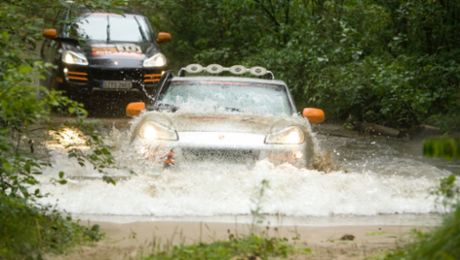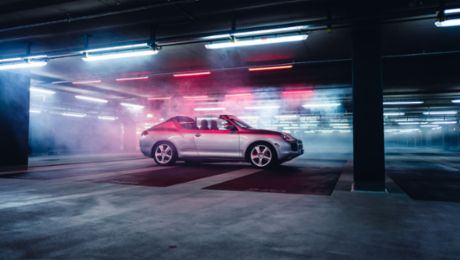Shortly after its successful debut in 2002, the Hemmingen-based model line was tasked with expanding the Cayenne range. Among the items on the wish list of the Porsche executive board was a variant with enhanced on-road performance that would slot in between the Cayenne S and the Cayenne Turbo. Oliver Laqua, now the overall vehicle project manager for the Cayenne, had worked as a concept engineer on the first generation of the SUV, internally known as the E1, in 1998. In 2004, he was commissioned to design a Cayenne that was particularly sporty in every respect. The young engineer got straight to work on the project, code-named ‘Roadrunner’. Laqua initially had a particularly lightweight vehicle in mind. “We planned to dispense with the transfer case, because that alone saved another 80 kilograms of weight. And we thought about four racing bucket seats for further weight reduction and a more emotive feel,” Laqua recalls.
Six-speed manual gearbox and an exclusive chassis setup
However, the fact that ‘Roadrunner’ was to be offered exclusively with rear-wheel drive was met with little enthusiasm from the board, as were the rather impractical bucket seats. When it came to the powertrain system, however, the designers got their way: a naturally aspirated V8 engine instead of a turbocharged one.
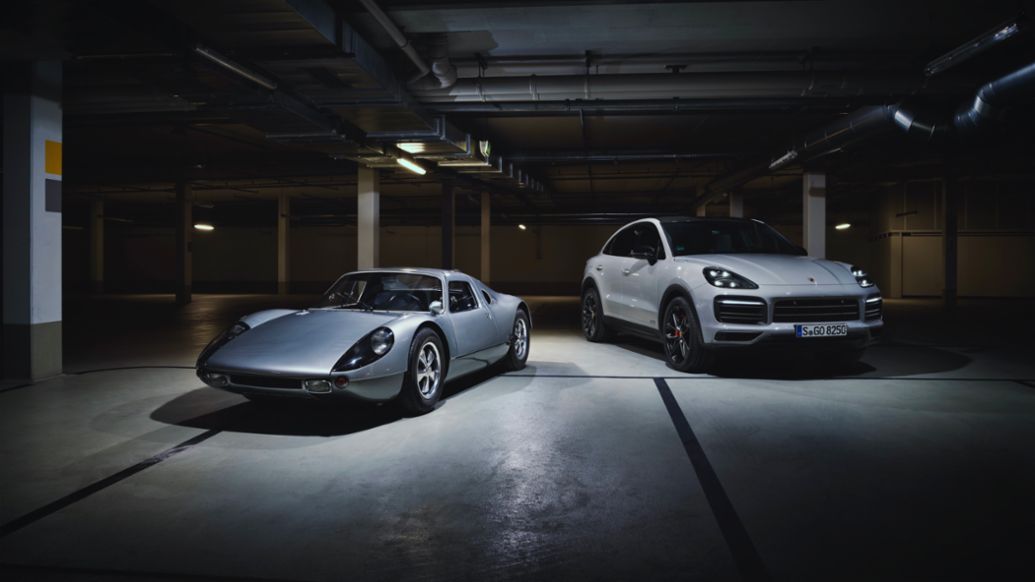
“In this project, it wasn't just the power that counted; the car also had to have real throttle response,” says Laqua. With a revised and enlarged intake system, the output of the 4.8-litre engine rose to 294 kW (405 PS), compared with the 283 kW (385 PS) in the Cayenne S. A six-speed manual gearbox was also fitted as standard. To further increase agility, the axle ratio was shortened from 3.55:1 to 4.1:1. A six-speed Tiptronic S with sportier shift points was available as an option. The suspension was tuned specifically for the GTS. For the first time, the steel suspension was combined with the Porsche Active Suspension Management (PASM) controlled damping system – a concept that until then had been reserved for two-door sports cars.
Fine-tuning by world rally champion Walter Röhrl
To fine-tune the chassis systems of the first Cayenne generation, Porsche sought the counsel of a two-time world rally champion: Walter Röhrl put the E1 prototypes through their paces, including on the legendary Nürburgring-Nordschleife and on ice tracks in the Arctic Circle. The skill and experience of the four-time Monte Carlo Rally winner had a major influence on the setup of the all-wheel-drive system in particular. Röhrl was also involved in fine-tuning the first Cayenne GTS.
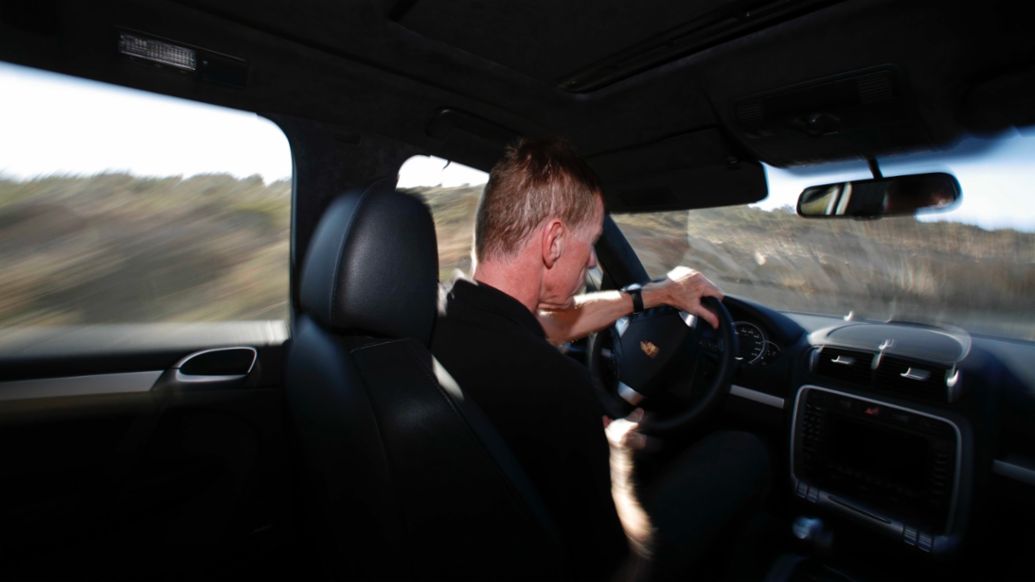
The Porsche Traction Management (PTM) system required no design modifications for the new model. Engine power was split 62:38 between the rear and front axles in the standard configuration, with any other power ratio between 100:0 and 0:100 possible via an electronically controlled multi-plate clutch if required. “If I want sportiness from all-wheel drive, then I have to make sure that I always have all four wheels under control,” says Röhrl, who joined Porsche as a test driver in 1993 and now represents the company as a brand ambassador. “Not that one axle turns faster than the other. That’s where the centre differential and the locking rear differential come in handy. Otherwise, you lose all the all the power on the unloaded wheel.”
Porsche Dynamic Chassis Control (PDCC) enhanced the Cayenne’s potential in terms of driving dynamics. This body roll stabilisation system was available as an option in conjunction with air suspension and PASM. Two active anti-roll bars interacted with hydraulic pivot motors to build up a counter-force to keep the body from rolling when cornering. “Body roll is the biggest problem when it comes to driving dynamics,” says Röhrl, who celebrated his 75th birthday in the Cayenne’s 20th anniversary year. “The weight is then only on the wheels on the outside of the corner. The inner wheels can then transmit less power; I need to prevent that. Anti-roll stabilisation was one of the most important innovations full stop; with it, you can ensure that even tall vehicles have very good handling.”
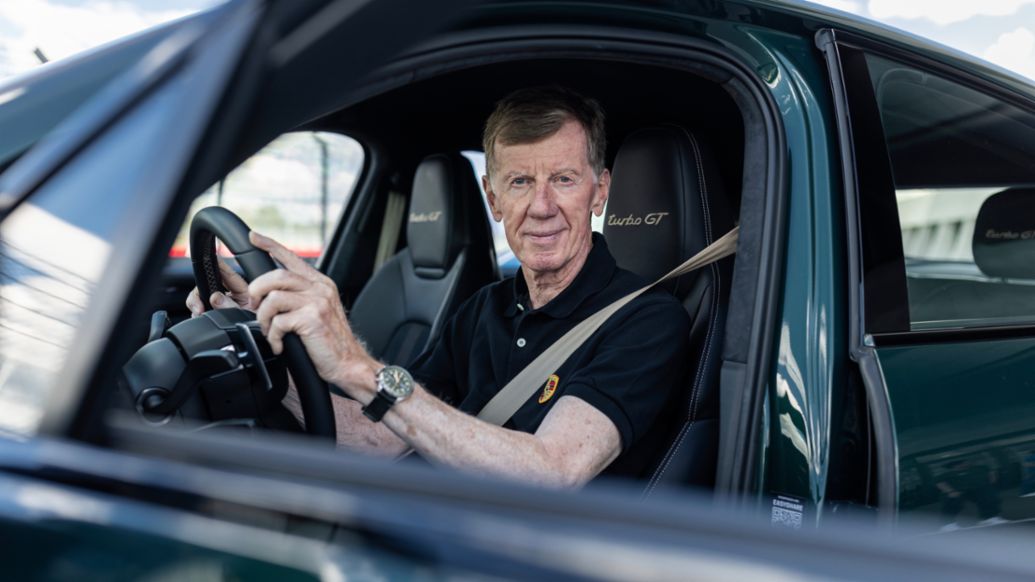
Added to this, the ride height of the new Cayenne model was significantly lower. Compared with the Cayenne S, ground clearance was reduced by 24 millimetres in the versions with steel springs and by 20 mm in cars fitted with the optional air suspension. With air suspension, the body was lowered a further 9 mm from 125 km/h and another 5 mm at 210 km/h.
Sporty appearance, throaty sound
Further visual evidence of the model’s focus on sporty on-road performance came in the form of the large air intakes and the prominent rear end, both based on the Cayenne Turbo, as well as the wheel arches, which were widened by 14 mm to accommodate 21-inch wheels with 295/35 tyres. The rear could also be fitted with an optional extended double-wing roof spoiler. The black window surrounds, door handles and trim above the B- and C-pillars emphasised the sportiness of the new model, as did the chrome-plated twin tailpipes of the sports exhaust system. Their sound could be intensified with the Sport button on the centre console. Pressing this button also changed the accelerator-pedal characteristics, producing an even more immediate response from the V8. Instead of the bucket seats that were originally envisaged, the model featured electrically adjustable 12-way sports seats with raised side bolsters as standard.
Inspiration for all Porsche model lines
The name was taken from Porsche history books – the 928 GTS, which was discontinued in 1995 and whose designation in turn had come from the Porsche 904 Carrera GTS of the 1960s. The historic models with the GTS suffix for ‘Gran Turismo Sport’ embodied extra sportiness combined with outstanding long-distance road-trip qualities. This was a concept typified by the newcomer to the Cayenne portfolio, and it was an immediate sales hit. Inspired by the resounding success of the first Cayenne GTS, the other Porsche model series also gradually expanded their range to include a GTS model based on the same principle: slightly increased engine power, noticeably more agile handling, and an elegant visual emphasis on enhanced sportiness.
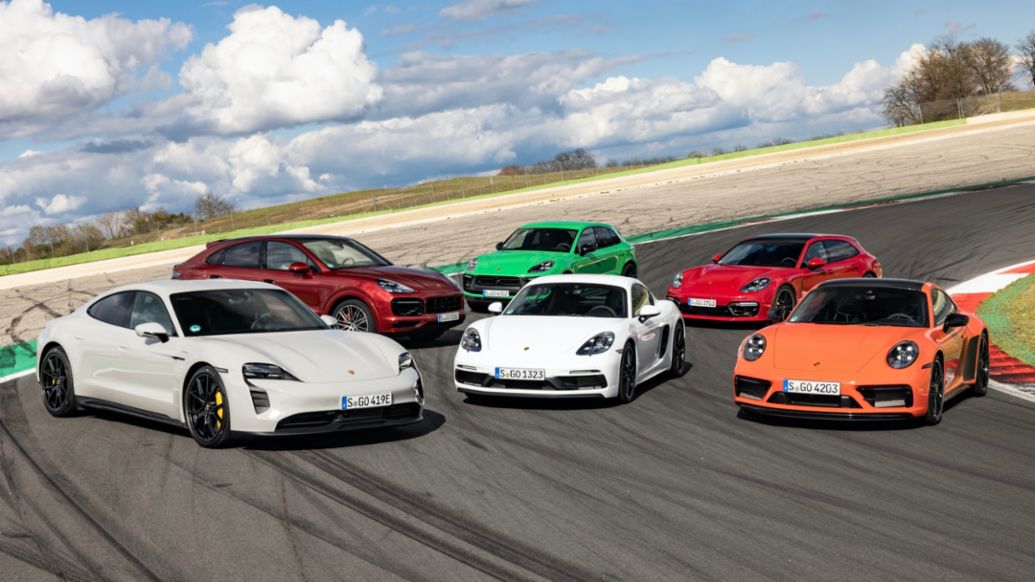
From V8 to V6 – and back again
The first Cayenne GTS and its 298 kW (405 PS) V8 engine made its debut at the IAA in Frankfurt in 2007, following the introduction of the first model update of the SUV (internally known as the E1 II). Shortly afterwards, a Porsche Design Edition limited to 1,000 examples appeared in the form of the Cayenne GTS PDE 3, with a special colour scheme and an even more exclusive feel to the exterior and interior.
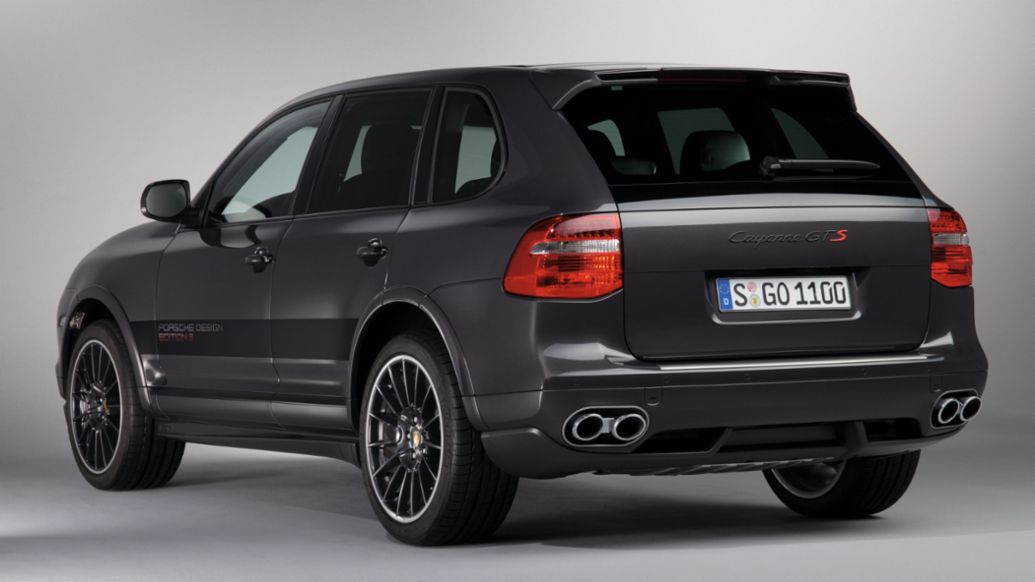
The second generation of the Cayenne GTS (the E2) was unveiled in Beijing in 2012. The output of the V8 increased to 309 kW (420 PS), while the new contrasting colour GTS package offered especially dynamic-looking accents in the interior. Porsche switched to a V6 engine for the upgraded Cayenne GTS (E2 II) unveiled in Los Angeles in 2014. Compared with its predecessor, the biturbo unit produced an additional 20 PS and 85 Nm more torque.
With the current E3 generation, two Cayenne GTS variants were launched in 2020: the Cayenne GTS and, for the first time, the Cayenne GTS Coupé. Both vehicles boast impressive cornering dynamics and continue the success story of the Cayenne GTS models. Equipped with a 4.0-litre V8 biturbo engine, both GTS models deliver a throaty sound, 338 kW (460 PS; ; ) of power and 620 Nm of torque. Sport-tuned suspension and the exclusive interior ambience found in all GTS models are naturally included as standard. Its popularity with customers continues unabated: in Europe and North America, some 10 per cent of all Cayenne customers opted for a GTS model in 2021, and the figure was even higher in the home market of Germany, at 16 per cent.
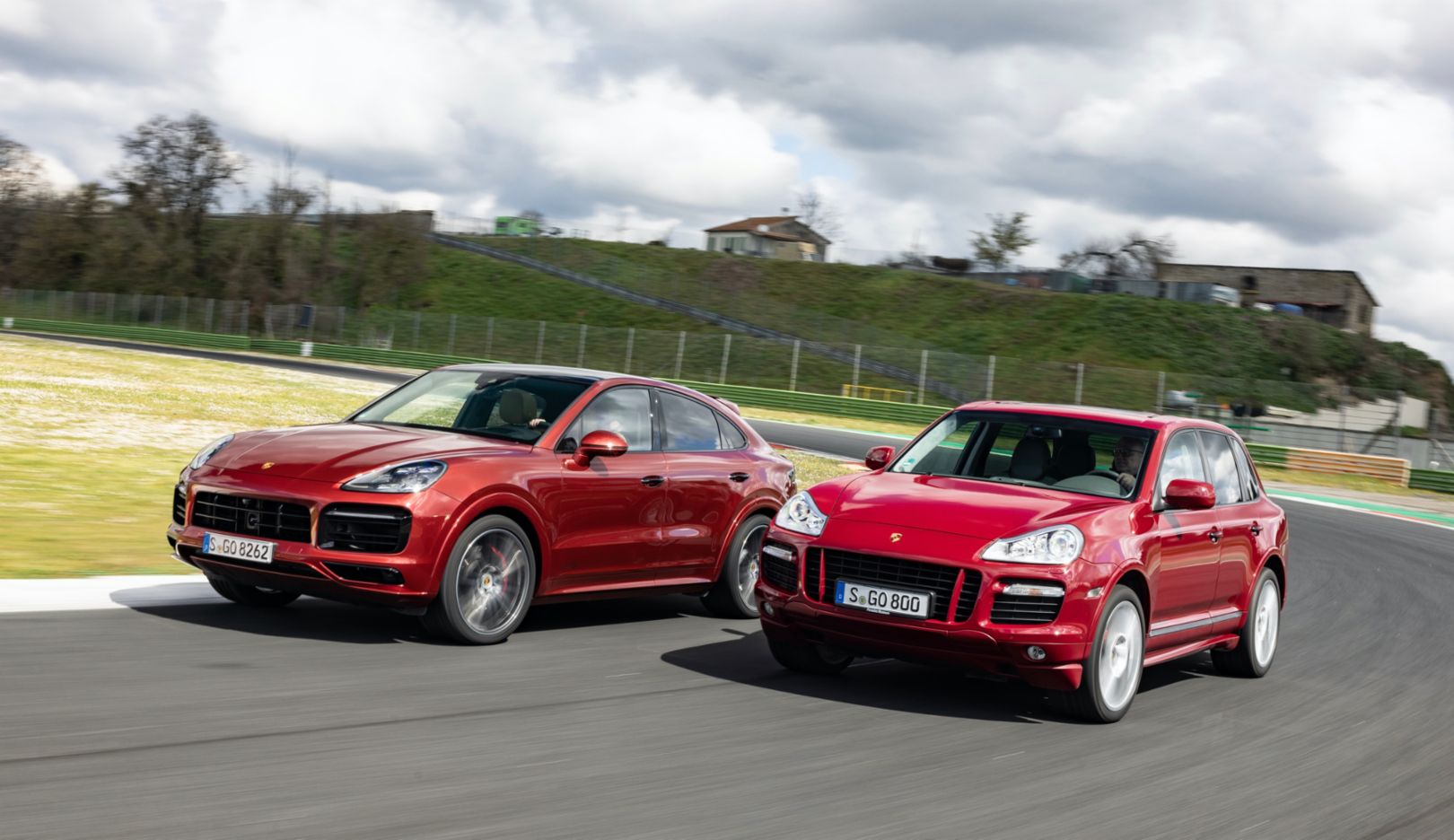
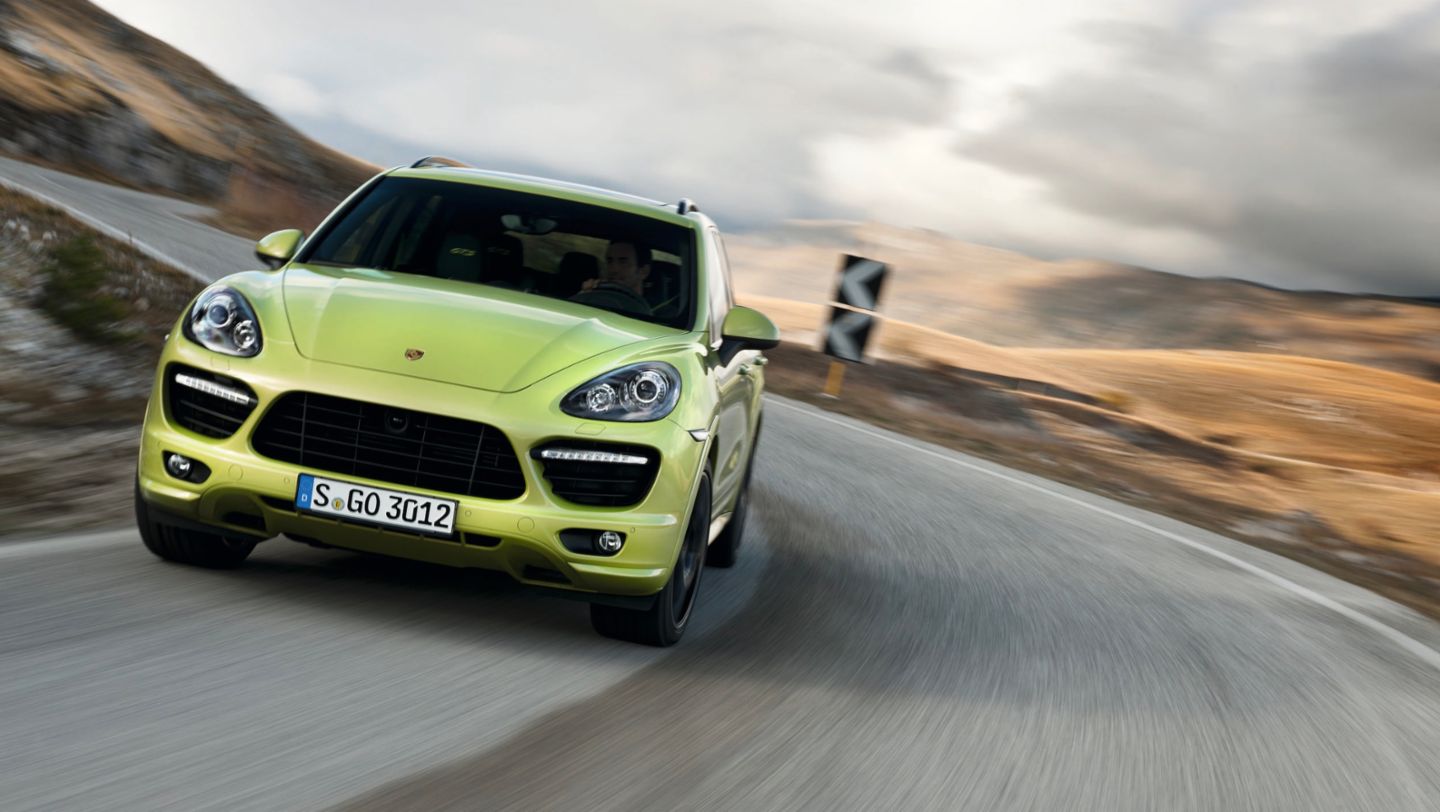
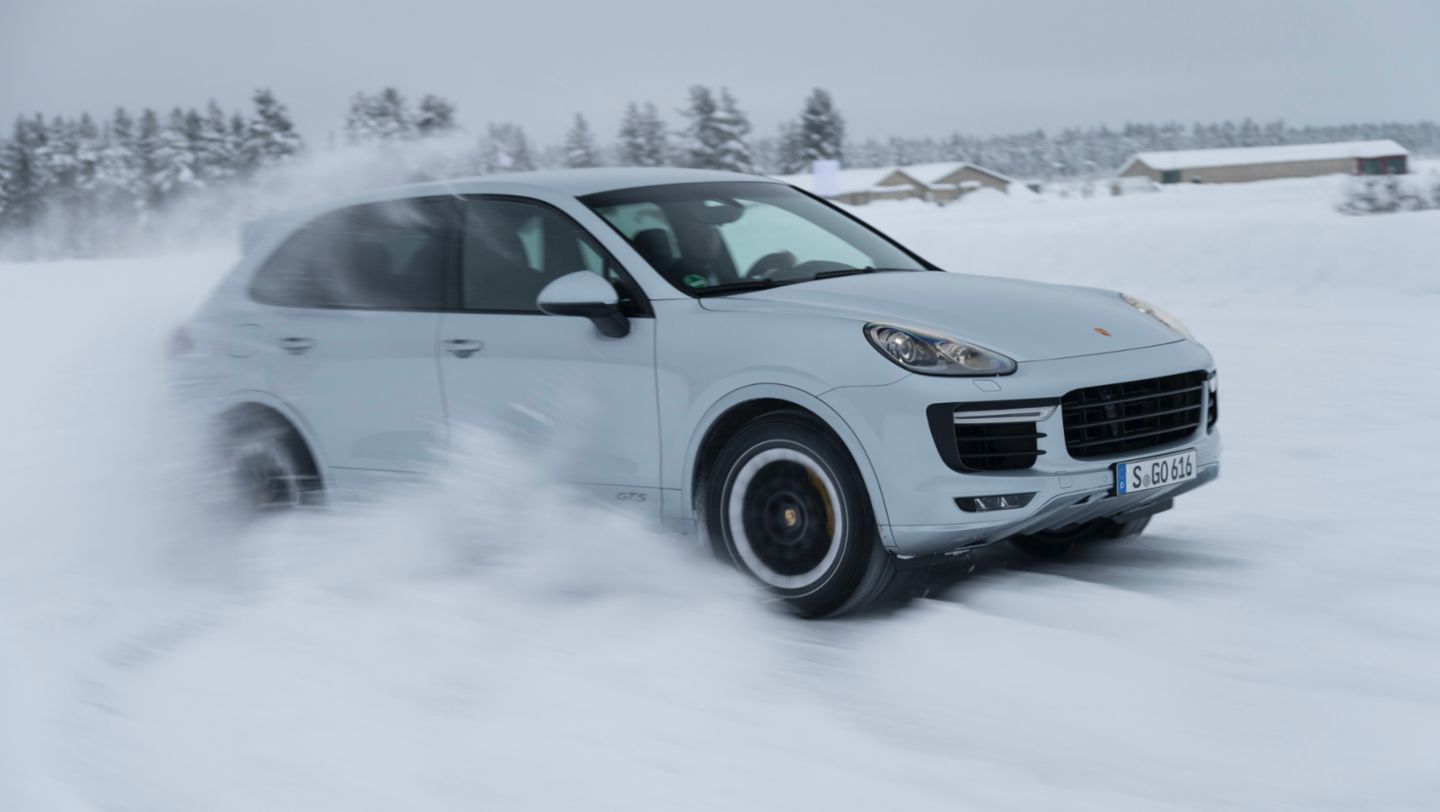
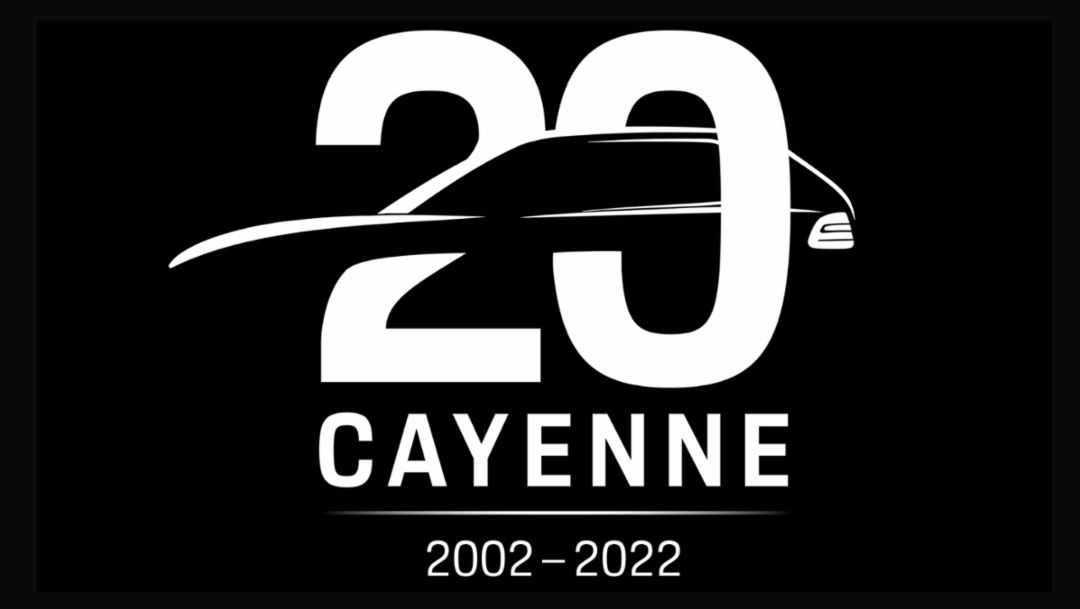
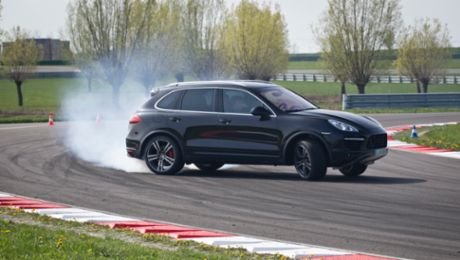
.jpg/jcr:content/04_2022_Werk(3).jpg)
